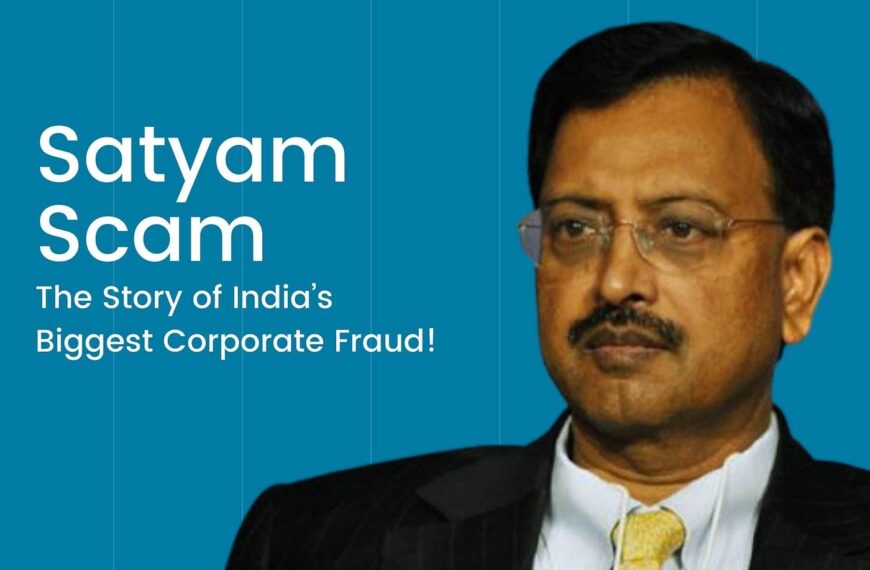Freddie Mac was once a cornerstone of the U.S. housing finance system. In 2003, however, an explosive accounting scandal shook the financial world when it was revealed that the company had intentionally manipulated its financial reports—misstating earnings by over $5 billion—to meet Wall Street expectations. This scandal not only led to massive fines and the firing of top executives but also eroded investor trust and underscored the importance of transparency and robust oversight.
1. What Happened in the Freddie Mac Scandal?
Background
Freddie Mac (the Federal Home Loan Mortgage Corporation) is a government-sponsored enterprise that plays a crucial role in providing liquidity for U.S. mortgage markets. Established with a mission to stabilize the housing market, the company was expected to report reliable and steady earnings.
The Fraudulent Practices
In 2003, the U.S. Securities and Exchange Commission (SEC) uncovered that Freddie Mac had deliberately overstated its earnings by nearly $5 billion. The fraudulent activities included:
- Earnings Manipulation: Key executives intentionally manipulated the company’s books to smooth earnings growth.
- Pressure to Meet Targets: Senior management created a corporate culture focused solely on hitting Wall Street earnings targets—no matter the cost.
- Concealment Tactics: Complex accounting maneuvers were used to hide the true financial condition of the company.
Key Players and Fallout
High-ranking executives such as COO David Glenn, CEO Leland Brendsel, CFO Vaughn Clarke, and senior vice presidents Robert Dean and Nazir Dossani were implicated. The SEC’s investigation led to:
- Fines and Restatements: Freddie Mac was forced to restate its earnings and pay a combined penalty of up to $125 million.
- Leadership Shake-Up: The scandal resulted in the firing of the top brass, shattering public and investor trust.
- Long-Term Impact: The episode served as a cautionary tale about corporate governance failures and ultimately paved the way for tighter regulations and reforms in financial reporting.
()
2. Red Flags: How to Spot Similar Fraud and Scams
While the Freddie Mac scandal was an example of corporate-level accounting fraud, many of its red flags are also found in scams that target consumers online. Here are common warning signs to watch for:
In Corporate Finance
- Unnaturally Smooth Earnings: Companies reporting consistently steady or rising profits—even in turbulent market conditions—might be manipulating figures.
- Frequent Restatements: Multiple revisions to past financial reports can signal underlying issues.
- Opaque Disclosures: Lack of clarity about accounting practices or a reluctance to explain financial discrepancies is a red flag.
In Online Scams
- Unsolicited Requests: Whether it’s an email or a text message, be cautious if you’re contacted out-of-the-blue with urgent claims.
- Pressure Tactics: Scammers often create a false sense of urgency—claiming you must act immediately to secure a deal or rectify a problem.
- Suspicious Links or Attachments: Poor grammar, unfamiliar sender addresses, or generic greetings may indicate phishing or malware attempts.
- Requests for Personal or Financial Information: Legitimate companies rarely ask for sensitive details via email or text.
(, )
3. How to Protect Yourself from Financial Scams
Both investors and everyday online users can take steps to shield themselves from similar types of fraud. Here are important measures to consider:
For Investors and Business Professionals
- Conduct Due Diligence: Always review a company’s financial reports carefully. Look for any unusual consistency or lack of transparency.
- Monitor Earnings Announcements: Stay informed about market reactions and analyst reports that may point to red flags.
- Use Reputable Sources: Rely on well-known financial news outlets and regulatory updates for accurate information.
For Online Users
- Verify the Source: If you receive unsolicited communication, contact the organization directly using trusted contact details—not the ones provided in the suspicious message.
- Be Skeptical of Urgency: Take a moment to think before acting on claims that demand immediate payment or personal data.
- Secure Your Devices: Use updated antivirus software, enable multi-factor authentication, and use strong, unique passwords for your accounts.
- Use Traceable Payment Methods: When making purchases online, prefer credit cards or payment platforms that offer buyer protection over untraceable methods like wire transfers.
- Educate Yourself Regularly: Stay updated on common scam tactics by following consumer protection agencies like the FTC or Scamwatch.
(, )
4. Lessons Learned and Moving Forward
The Freddie Mac scandal was more than just a case of fraudulent accounting—it was a wake-up call for corporate America and investors alike. It revealed how corporate greed, coupled with lax oversight, can lead to catastrophic consequences that ripple through the entire financial system.
For everyday consumers, the same principles apply: vigilance, skepticism, and education are your best defenses. Whether you’re reviewing a company’s financial statements or scrutinizing an unexpected email, a critical mindset can save you from significant financial loss.
By understanding both the complexities behind the Freddie Mac scandal and the common red flags of financial scams, you can take proactive steps to protect yourself. Always verify information independently, use secure payment methods, and keep abreast of the latest scam alerts from trusted sources.
Stay informed. Stay safe. And remember—if something seems too good (or too urgent) to be true, it probably is.
This comprehensive article offers both a historical case study in corporate fraud and practical advice for spotting and avoiding scams online, serving as a valuable resource for investors and consumers alike.














